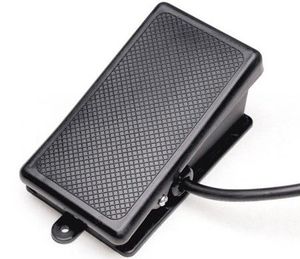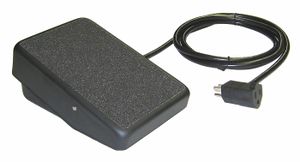Foot Switches
Foot Switches are Switches that are activated when a heavy object is placed on top of them. In most games, there are two main types: switches that remain depressed after whatever activated them moves off them and switches that must be held down constantly. Lesser used types include pattern switches , timed switches that rises again after a while and fake switches, which do not function and are used to confuse the player.
Foot switches can be used to turn electrical equipment on and off with the foot, freeing the hands to perform other operations or providing ergonomic improvement to a workstation. Foot switch applications often require different sizes and shapes, electrical ratings, pedal actions, cables, labels, and other variations. Foot switch pedals for foot switch operated machines such as shearing machines, spinning machines, spinning lathes, machine tools, wrapping machines, riveting machines, riveting presses, etc.
Foot switches are used to control many industrial processes, while leaving the operator's hands free to perform other functions. The type or model of foot switch suitable for each application will vary depending on factors such as the control function required, degree of protection required, production methods, unusual conditions, government regulations, etc.In some applications more than one foot switch may be required, as when two or more persons are operating a machine. In these cases, safe practice and regulations require that the foot switches be wired in series making it necessary that each operator's foot switch be actuated before the machine will cycle.In some applications, such as power presses, additional operator protection such as point-of-operation guarding must be provided when a foot switch is used as an actuator. This is necessary since the operator's hands and other parts of the body are free to enter the pinch point area and serious injury can occur. The shielding provided on foot switches cannot protect an operator from injury. For this reason the foot switch cannot be substituted for or take the place of point-of-operation protection.

